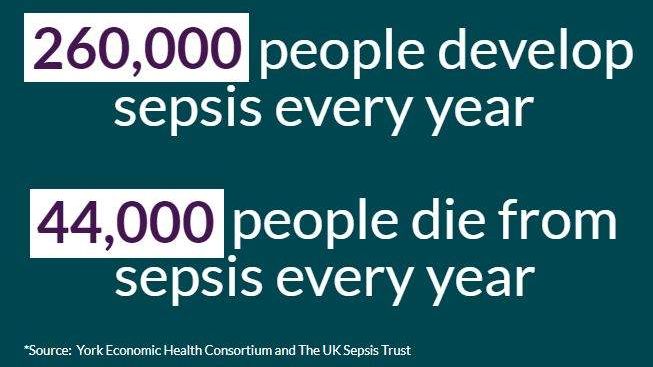
News -
Sepsis detected and treated early using new technology
Sepsis patients can be diagnosed and treated earlier with the help of new technology available for hospitals and homecare settings.
Healthcare organisations can now use a patient monitoring platform called the Patient Status Engine (PSE) to help doctors and nurses rapidly pick up the illness, saving some of the 44,000 lives lost to it each year in the UK.
The PSE uses vital signs, early warning scores and data analytics to flag up any changes in a patient’s condition and alert clinicians to what could be the early onsets of sepsis faster than they would have otherwise been able to detect it.
Rebecca Weir, cofounder of Isansys Lifecare which has developed the PSE, says: “Sepsis is a killer, not because doctors don’t know how to treat it but because the recognition of the condition is complex and often not early enough.
“By collecting the patient’s vital signs in real-time and continuously we are proactively driving a response to this problem. This can give doctors and nurses a better chance to diagnose and treat this condition much more quickly which is crucial as the risk of death from sepsis increases with every passing hour it goes untreated.”
Research into critical care shows that if diagnosed and treated in the first hour following presentation with sepsis, the patient has more than an 80 per cent survival rate. After the sixth hour, the patient only has a 30 per cent survival rate. It consumes over a third of our most expensive hospital beds in Intensive Care and costs the NHS around £2.5 billion a year.
Rebecca added: “Changes in a patient’s health status often linked with a sepsis diagnosis include fast breathing, fast heartbeat, change in heart beat pattern and a high or low temperature. Due to the integrated nature of the PSE, these parameters are monitored constantly by the platform. If any one of the parameters register at an abnormal level a patient is deemed to be at risk of developing sepsis. The clinician is then alerted to a change in the patient’s condition and they can react much more quickly than they would be able to otherwise.”
Sepsis, often called septicemia or blood poisoning, is a life-threatening illness that can affect people of every age. It is killing five Britains every hour and health chiefs warn it should be treated as an emergency just like heart attacks.
There are now 150,000 cases of Sepsis in the UK each year and 44,000 deaths linked to the condition. Without prompt treatment with antibiotics, sepsis can lead to multiple organ failure and death.
Existing research highlights early detection of patient deterioration is vital to improving patient safety and avoiding preventable deaths.
GPs are now being encouraged to re-evaluate the way they view infections in order to avoid overlooking sepsis.
The new guidance, issued by the National Institute for Health and Care Excellence (NICE) says that thousands of lives could be saved by implementing these measures.
The guidance comes in the wake of the death of toddler William Mead, who died after several warning signs that he had sepsis were missed.
Rebecca says: “It is vital for patient care that doctors are able to initiate crucial treatment earlier for sepsis in order to save lives. Without effective monitoring, early warning signs, which could have been detected and acted upon are often missed, as was sadly the case here.”
Last year, Isansys Lifecare, based in Abingdon, near Oxford, won a Small Business Research Initiative (SBRI) Healthcare development contract to reduce the risk of sepsis in cancer patients.
One of the hospitals the company is now working with in the UK is the Queen Elizabeth Hospital in Birmingham where the PSE is being used to monitor cancer patients undergoing chemotherapy. These patient groups are at high risk of sepsis and by collecting the patient’s vital signs continuously and in real-time with the use of wireless sensors, the platform will be able to enable the detection of sepsis much earlier and ensure they are treated within the time-frame set out by the Sepsis Six. This helps avoid any readmissions into hospital, or even worse, any deaths linked to the condition.
